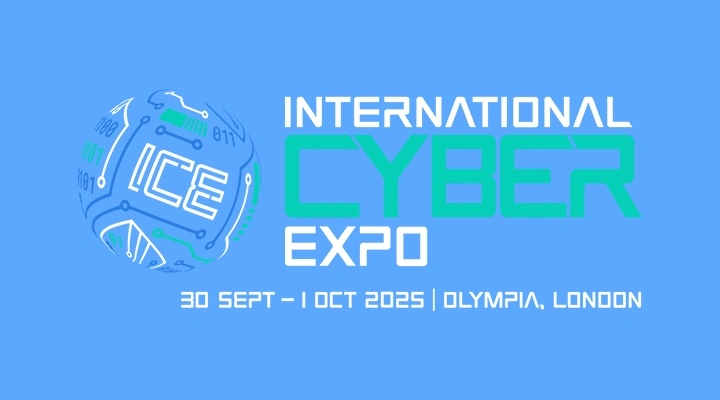Safety first

John E. Kaye
- Published
- Home, Technology

True business security starts with protecting your workforce, here are some tips on developing a human-centered security culture
Data breaches and other security incidents are often traced to human error, rather than vulnerabilities in technology. Cybercriminals and other bad actors frequently exploit human psychology in their attacks and there are often psychological reasons for the major errors that lead to security issues.
This climate of uncertainty, with more people working from home, is tough all around. It may be tempting to apply strict rules, and they have their place, but educating your staff on the value of information security and encouraging critical thinking will have a much bigger long-term impact.
A human-centered approach to security accepts common failings and acknowledges clever attack techniques that are designed to trick us. Because it is only by accepting these weaknesses that you can design an effective information security system. Understand threats and you can arm employees with the knowledge they need to avoid falling victim.
Review your information security
Start with an assessment of your current security posture and examine how information is handled throughout the organisation. How do different departments value information security? Is there a common culture across the company? How do third-party partners fit into this culture? This initial assessment should help you identify where human vulnerabilities lurk and how you might go about tackling them. Look for cognitive bias and consider where it might cause an issue. Optimism bias is a common cause of risky behavior, but perhaps you’ll find the “over-justification effect” has demotivated good security practice when there’s no tangible reward.
Test employee awareness
Self-awareness is vital in building a stronger security culture, so take time to learn what level of awareness your employees have. Do they understand and recognise cognitive bias in themselves and their colleagues? Are specific departments or working groups prone to certain biases? By running through some basic exercises and discussions you can better tailor training and get a picture of what is required.
Identify threats and probe them
Create a ranked list of threats to the business and design some scenarios based on those key risks. Go beyond penetration testing and task a third-party with crafting test attacks on your business that employ social engineering techniques. Find out if your employees fall victim to phishing attacks with different levels of sophistication. Learn how stressful situations impact their responses. Envisioning a perfect storm will help you design more effective training and build real resilience.
Promote critical thinking
Instead of explaining how to cope with specific scenarios in detail or breaking down specific risks, it is beneficial to encourage critical thinking. If you can foster natural suspicion and strong personal awareness, combined with analytical skills and clear communication, then you can equip your employees with the skills they need to cope with any security incident. Try to reinforce the importance of keeping an open mind and being creative in solving problems. The aim is to embed secure behavior and empower people to deal with complex and challenging situations.
Assess interactions with technology and data
Consider the daily stresses that employees face, identify the break points where they are prone to manipulation, and take small steps to combat them. Simple reminders or nudges towards desired behavior delivered automatically at the right time can make a big difference. The aim is to make life easier for your staff, to remove friction and uncertainty, and to eradicate obvious systemic triggers for different cognitive biases.
Learn from successful attacks
One of the best learning resources you have at your fingertips is past attacks. Evaluate how previous security incidents unfolded. Look for the weak points and failings in your organisation and in the people involved. Include these lessons in your training programmes and mitigate the issues you identify, just be careful to avoid a blame culture.
Restructure processes and policies
Consider what you learned about employee interactions, possible stress points, and triggers, and blend it with what you know went wrong in previous breaches. This information should be used to restructure your processes, so the correct, logical path to desired behavior is as frictionless as possible. Policy should address past failings directly and make sure to change areas that led to circumvention in the past.
Automate where possible
While overreliance on technology can be dangerous, there will be areas that you can automate to reduce the risk of human error. Spam filters and contextual nudges to desired secure behavior can be greatly beneficial. Employ artificial intelligence to monitor networks for abnormal behavior and filter out some of the noise, while flagging potential problems for further investigation by a security professional.
The human-centered approach
Having clear procedures set in stone can be an effective way to reduce the risk of successful manipulation, but you need to balance rules with reasoning. Teach people to think more critically, remove some of the challenges that make them vulnerable, and you can build a strong, resilient, human-centered security culture.
Sign up to The European Newsletter
RECENT ARTICLES
-
 AI innovation linked to a shrinking share of income for European workers
AI innovation linked to a shrinking share of income for European workers -
 Europe emphasises AI governance as North America moves faster towards autonomy, Digitate research shows
Europe emphasises AI governance as North America moves faster towards autonomy, Digitate research shows -
 Surgeons just changed medicine forever using hotel internet connection
Surgeons just changed medicine forever using hotel internet connection -
 Curium’s expansion into transformative therapy offers fresh hope against cancer
Curium’s expansion into transformative therapy offers fresh hope against cancer -
 What to consider before going all in on AI-driven email security
What to consider before going all in on AI-driven email security -
 GrayMatter Robotics opens 100,000-sq-ft AI robotics innovation centre in California
GrayMatter Robotics opens 100,000-sq-ft AI robotics innovation centre in California -
 The silent deal-killer: why cyber due diligence is non-negotiable in M&As
The silent deal-killer: why cyber due diligence is non-negotiable in M&As -
 South African students develop tech concept to tackle hunger using AI and blockchain
South African students develop tech concept to tackle hunger using AI and blockchain -
 Automation breakthrough reduces ambulance delays and saves NHS £800,000 a year
Automation breakthrough reduces ambulance delays and saves NHS £800,000 a year -
 ISF warns of a ‘corporate model’ of cybercrime as criminals outpace business defences
ISF warns of a ‘corporate model’ of cybercrime as criminals outpace business defences -
 New AI breakthrough promises to end ‘drift’ that costs the world trillions
New AI breakthrough promises to end ‘drift’ that costs the world trillions -
 Watch: driverless electric lorry makes history with world’s first border crossing
Watch: driverless electric lorry makes history with world’s first border crossing -
 UK and U.S unveil landmark tech pact with £250bn investment surge
UK and U.S unveil landmark tech pact with £250bn investment surge -
 International Cyber Expo to return to London with global focus on digital security
International Cyber Expo to return to London with global focus on digital security -
 Cybersecurity talent crunch drives double-digit pay rises as UK firms count cost of breaches
Cybersecurity talent crunch drives double-digit pay rises as UK firms count cost of breaches -
 Investors with €39bn AUM gather in Bologna to back Italy’s next tech leaders
Investors with €39bn AUM gather in Bologna to back Italy’s next tech leaders -
 Axians and Nokia expand partnership to strengthen communications infrastructure across EMEA
Axians and Nokia expand partnership to strengthen communications infrastructure across EMEA -
 Forterro buys Spain’s Inology to expand southern Europe footprint
Forterro buys Spain’s Inology to expand southern Europe footprint -
 Singapore student start-up wins $1m Hult Prize for education platform
Singapore student start-up wins $1m Hult Prize for education platform -
 UK businesses increase AI investment despite economic uncertainty, Barclays index finds
UK businesses increase AI investment despite economic uncertainty, Barclays index finds -
 Speed-driven email security: effective tactics for phishing mitigation
Speed-driven email security: effective tactics for phishing mitigation -
 Short circuit: humanoids go for gold at first 'Olympics for robots'
Short circuit: humanoids go for gold at first 'Olympics for robots' -
 New IBM–NASA AI aims to forecast solar flares before they knock out satellites or endanger astronauts
New IBM–NASA AI aims to forecast solar flares before they knock out satellites or endanger astronauts -
 AI is powering the most convincing scams you've ever seen
AI is powering the most convincing scams you've ever seen -
 British firm Skyral to help Mongolia tackle pollution with AI traffic modelling
British firm Skyral to help Mongolia tackle pollution with AI traffic modelling



























